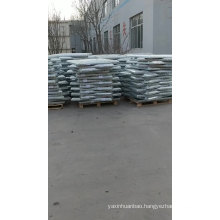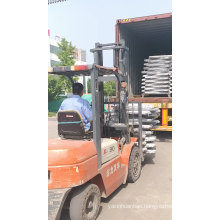Spot sale Trimethylolpropane trimethacrylate 97%
Basic Info
Model No.: cy3290-92-4
Product Description
Trimethylolpropane trimethacrylate
English Name: Trimethylolpropane trimethacrylate
Alias: TMPTMA; 2,2-Bis (methacryloxymethyl) butyl methacrylate; 2-Ethyl-1,3-dimethacryloxy-2-(methacryloxymethyl) propane
CAS No.: 3290-92-4
Molecular weight: 338.40
EINECS accession number: 221-950-4
Physical and chemical indicators editing
Colorless or yellowish transparent liquid, insoluble in water, ethanol, etc., dissolved in aromatic organic solvents. Melting point: - 25 degrees C; Boiling point: > 200 degrees C 1 mm; Density: 1.06 g/mL at 25 degrees C (lit.); Vapor pressure: < 0.01 mm Hg (20 degrees C); Refractive index: n20/D 1.472 (lit.).
Molecular structure map
Molecular structure map
Color (Pt-Co) <50
Acid value mgKOH/g <0.2
Water% <0.2
Content% >95
Refractive index nD25 1.468 to 1.478
Viscosity 25 CPS 30~60
Specific gravity D425 1.060 to 1.070
purpose
A. vulcanizing activator for special rubber
Ethylene-propylene rubber and EPDM rubber, chlorinated rubber, silicone rubber, polyurethane, ethylene/vinyl acetate copolymer (EVA), chlorinated polyethylene elastomer (CPE) and Other special rubber, vulcanization is very difficult, generally using organic peroxides (such as DCP, BPO) vulcanization, if the use of a single organic peroxide vulcanization, vulcanization Too long time and insufficient vulcanization make it difficult to guarantee good mechanical and physical properties. Therefore, TMPTMA must be added as a vulcanizing agent to achieve good results. For example, when organic fluorine rubber is vulcanized with DCP, the addition of 1-4% TMPTMA can not only shorten the vulcanization time, increase the vulcanization degree and reduce the amount of DCP, but also significantly improve the mechanical strength, wear resistance, solvent resistance and corrosion resistance of the products. In the vulcanization process of fluorinated rubber, the double bond of TMPTMA not only participates in the vulcanization cross-linking reaction, but also acts as the acceptor of hydrogen halide (HF, HCL, etc.), absorbs the hydrogen halide released during the processing, thus not only improving the quality of products, but also greatly reducing the corrosiveness of vulcanizates. The compound containing TMPTMA has a plastic effect when mixed, and has a hard effect after vulcanization.
B. crosslinking modifiers for various thermoplastics
Polyethylene, polybutene, polyvinyl chloride, polypropylene, polystyrene, CPE and EVA thermoplastics. The thermal, light and irradiation crosslinking of TMPTMA with organic peroxides (such as DCP) can not only improve the heat resistance, solvent resistance, weathering resistance, corrosion resistance and flame retardancy of the crosslinking agent products, but also improve the mechanical and electrical properties, which can improve the product quality and eliminate the odor of DCP. Reduce DCP consumption.
Typically, thermal crosslinking of polyethylene, PVC, CPE, adding TMPTMA is 1-3%, DCP is 0.5-1%; for irradiated (or light) crosslinked PE, adding a small amount of TMPTMA can also significantly improve the product performance, improve the degree of cross-linking and cross-linking depth; foamed PE products, adding a small amount of TMPTMA (0.5-1) for cross-linking foaming, can eliminate DCP cross-linking. For PVC which is difficult to cross-link, it is better to use PVC / EVA co-crosslinking, that is, adding 10-20% CPE or EVA to PVC to mix and cross-link, which can better improve the performance of the products.
Modifier of C. alkyl acrylate
Copolymerization and crosslinking modification of TMPTMA with alkyl propylene ester can significantly improve its heat resistance, weatherability, mechanical strength and optical properties. For example, when a small amount of methacrylate (less than 6%) is crosslinked with TMPTMA, the Vicat heat resistance of organic glass can be improved by more than 30 C, and the wear resistance and optical properties can also be improved obviously.
D. crosslinking modifier for polyester resin
Thermoplastic polyester and unsaturated polyester can be used as crosslinking modifier by adding TMPTMA, which can significantly improve the strength, heat resistance, corrosion resistance, dimensional stability, weatherability and so on. For hot-pressed unsaturated polyester FRP products, the hot-pressed products made by TMPTMA as cross-linking agent can be used at temperatures above 180 C.
Modifiers for E. coatings and adhesives
Modification of epoxy acrylate, polyurethane and unsaturated polyester based coatings or adhesives by adding TMPTMA, curing and crosslinking by electron beam, X-ray, UV or heating, can shorten the curing time, improve the adhesive strength and quality.
It is used as a sealing agent and blocking agent for automobile body. By reducing the viscosity of paste sol, improving the workability and freely adjusting its hardness, the heat resistance, solvent resistance and physical properties of the film can also be improved by grafting and crosslinking.
Formula examples: PVC paste resin 100 parts, DOP 60 parts, TMPTMA 5-30 parts, stabilizer 2-4 parts, organic peroxide 0.03-0.6 parts.
Insulation materials for F. microelectronic products
TMPTMA can be homopolymerized or copolymerized with other heat-resistant monomers, and its polymer film has very good heat resistance, radiation resistance, moisture resistance, weather resistance, and electrical insulation properties. Adding TMPTMA to many microelectronic insulating materials can obviously improve the above performances, especially in the fabrication of microelectronic products such as integrated circuits and printed circuit boards.
G. crosslinking agent for special Ion exchange resin
Acrylic acid and styrene ion exchange resins usually use divinylbenzene as crosslinking agent. If TMPTMA is used instead of crosslinking agent, not only the dosage is small, but also the new ion exchange resins with excellent properties such as anti-pollution, high strength, large pore diameter, heat resistance, corrosion resistance and oxidation resistance can be prepared.
H. impact modifier
TMPTMA graft copolymerization with acrylic acid, styrene, acrylonitrile and so on can prepare the excellent impact modifier for PVC, PS and other thermoplastic plastics, and also directly prepare the molded plastic with excellent impact resistance.
Modified monomers of I. copolymers
TMPTMA, as a kind of monomer with heat resistance, weathering resistance, impact resistance, moisture resistance and other properties, can be copolymerized with other monomers to make special copolymers.
Packaging, storage and transportation
The storage temperature is 16-27 degrees centigrade, avoiding direct sunlight. Avoid contact with oxidants and free radicals. It can be stored in dark PE barrels. There should be some space in the container to meet the oxygen demand of the inhibitor. Use in six months has the best results. Transport by non dangerous goods. Our company supplies products as well.
1. organic intermediates
2. pharmaceutical raw materials
3. additive
4. plant extracts
5. catalysts and auxiliaries
6. organic materials
7. inorganic salt
8. agricultural chemicals
9. dyes and pigments
10. flavors and fragrances
Product Categories : Catalysts And Auxiliaries > Rubber Auxiliaries
Hot Products
Yaxin frp tank in water treatment systemfrp tank with PE linner3072 3672 4872frp tank with runxin valveNSF frp water filter tank 1054FRP tank with T&B water distributor4272 FRP pressure tankFRP Pressure tank for water treatment systemFRP pressure Tank with water flow distributor and valve150 PSI HOT SALE FRP TANKVorton Membrane 4040SS material RO membrane housingautomatic valve for water treatmentThreaded type water distributor for frp tank4040 FRP ro membrane housingNewly environmental ro system frp pressure membrane housingHigh Quality FRP tank






